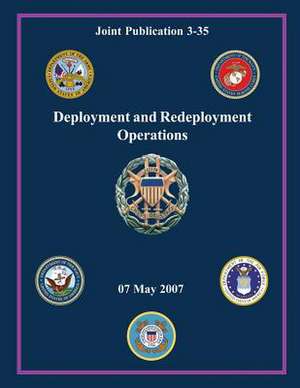Deployment and Redeployment Operations (Joint Publication 3-35)
Autor Chairman Of the Joint Chiefs of Staffen Limba Engleză Paperback
Preț: 107.14 lei
Nou
Puncte Express: 161
Preț estimativ în valută:
20.50€ • 21.92$ • 17.09£
20.50€ • 21.92$ • 17.09£
Carte disponibilă
Livrare economică 28 martie-11 aprilie
Preluare comenzi: 021 569.72.76
Specificații
ISBN-13: 9781480218406
ISBN-10: 1480218405
Pagini: 190
Dimensiuni: 216 x 279 x 10 mm
Greutate: 0.45 kg
Editura: CreateSpace Independent Publishing Platform
ISBN-10: 1480218405
Pagini: 190
Dimensiuni: 216 x 279 x 10 mm
Greutate: 0.45 kg
Editura: CreateSpace Independent Publishing Platform
